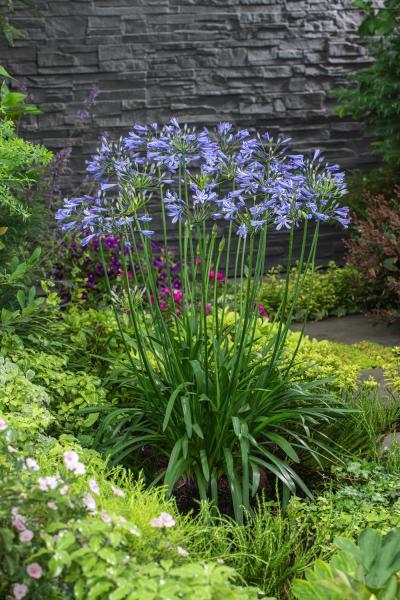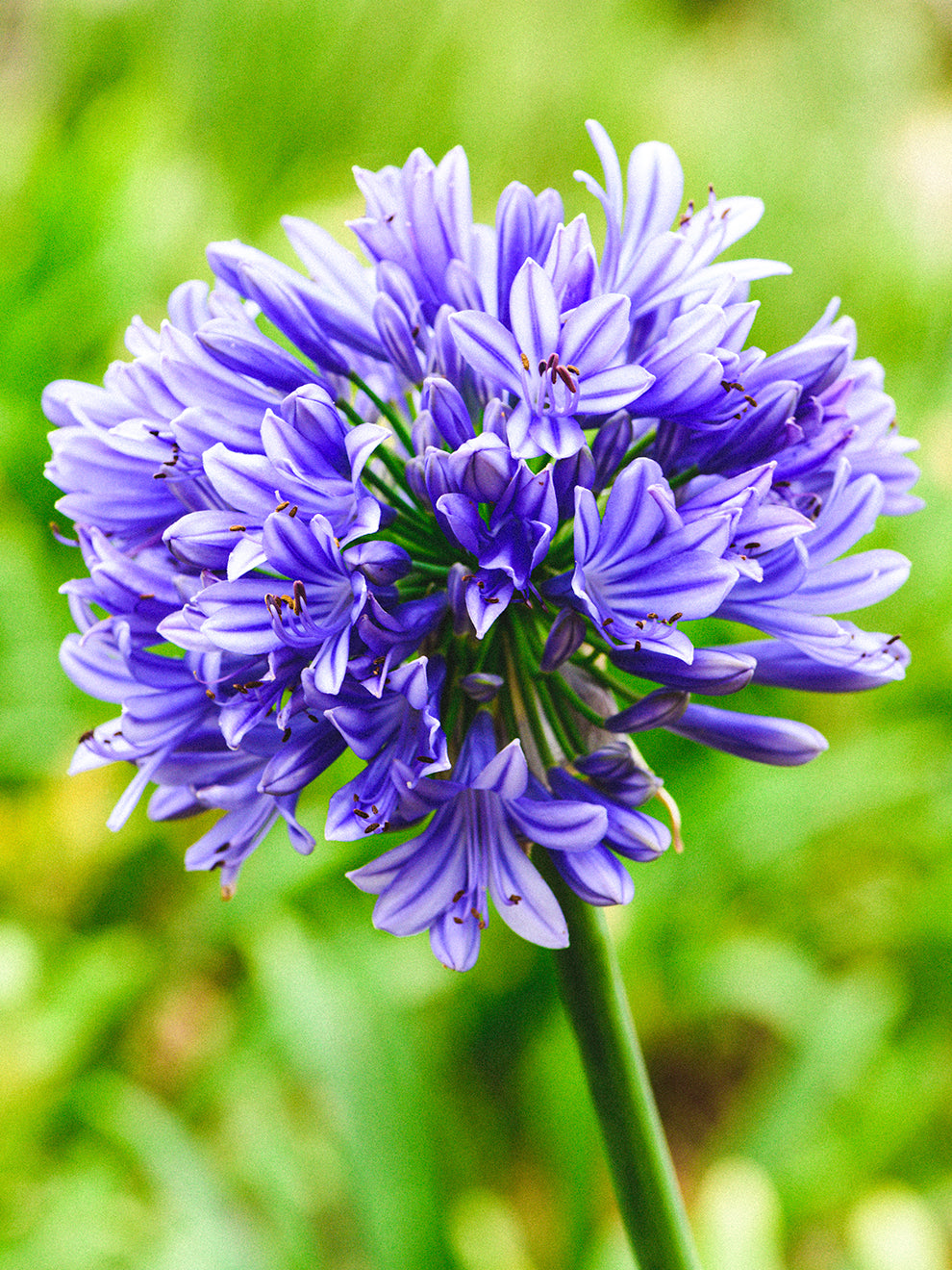Growing Agapanthus: A Total Overview to Beautiful Blooms
Growing Agapanthus: A Total Overview to Beautiful Blooms
Blog Article
Releasing the Secret to Successful Agapanthus Growing: Tips and Tricks for a Flourishing Yard
In the world of gardening, growing agapanthus efficiently requires a critical approach that encompasses different facets of plant care. With careful focus to detail, one can open the tricks to nurturing these sensational flowers, bring about a yard that flourishes with appeal and vibrancy. By comprehending the nuances of agapanthus cultivation, one can develop an atmosphere where these plants grow and flower perfectly. In the complying with conversation, we will discover necessary tips and techniques that will assist you in the direction of a growing agapanthus yard, providing understandings into finest techniques, soil problems, sprinkling techniques, and extra.
Planting Agapanthus: Finest Practices
When growing Agapanthus, proper dirt preparation is necessary for making certain successful growth and advancement of these attractive flowers. Agapanthus, typically referred to as Lily of the Nile or African lily, grows in well-draining dirt with a slightly acidic to neutral pH level - Agapanthus. Before planting, it is critical to amend heavy clay dirts with natural matter such as compost or peat moss to improve drain and supply crucial nutrients for the plants
To plant Agapanthus, choose a location that receives full sunshine to partial color, as this will certainly advertise healthy and balanced development and bountiful blooming. Dig an opening two times the size of the plant's root ball and place the Agapanthus at the very same deepness it was formerly expanding. Carefully backfill the hole with soil, pressing down firmly to remove any air pockets around the roots.
Water the newly grown Agapanthus completely and proceed to maintain the dirt uniformly damp, especially throughout the plant's energetic growing period. Agapanthus. Using a well balanced plant food once a month can additionally support the plant's growth and flowering. By complying with these ideal methods for planting Agapanthus, you can develop a stunning display screen of these exciting blossoms in your garden
Ideal Dirt Issues for Agapanthus
For ideal development and flowering success of Agapanthus plants, ensuring the dirt conditions are suitable is important. Agapanthus prefers dirt that is rich in nutrients, so integrating a balanced plant food during the expanding season can advertise healthy and balanced growth and vivid blooms.

Watering and Feeding Tips
To guarantee healthy development and lively flowers, proper watering and feeding strategies are vital for successful Agapanthus cultivation. Agapanthus plants profit from routine watering, especially throughout the growing season.
When it involves fertilizing Agapanthus, a balanced fertilizer with equivalent parts nitrogen, phosphorus, and potassium can be applied in the springtime to promote healthy and balanced growth and blooming. Slow-release fertilizers are ideal for supplying nutrients slowly over an extended duration. Avoid over-fertilizing, as this can bring about extreme vegetation growth at the expenditure of flowers.
In addition, integrating raw material like garden compost into the dirt can improve nutrient levels and boost soil framework, aiding in the this contact form total health and wellness of the Agapanthus plants. By adhering to these watering and fertilizing pointers, gardeners can guarantee their Agapanthus plants thrive and create stunning screens of flowers.
Pruning and Deadheading Techniques
Correct pruning and deadheading strategies play an important duty in preserving the wellness and visual appeals of Agapanthus plants, enhancing the important techniques of watering and feeding for successful growing. Trimming Agapanthus involves eliminating invested blossom heads, yellowing or dead leaves, and general shaping of the plant to promote much better development. Deadheading, the process of eliminating discolored blossoms, not only improves the plant's look yet also encourages additional growing.
When deadheading Agapanthus, it is advisable to snip off the flower stem at the base utilizing sharp, tidy shears. This helpful site procedure redirects the plant's energy from seed manufacturing back into root and vegetation development, advertising a much healthier and more robust plant. Routine deadheading can prolong the growing period of Agapanthus and avoid self-seeding, which can cause congestion.
In terms of pruning, Agapanthus generally take advantage of a light trim after flowering to clean up the plant and motivate fresh growth. Cutting down the invested blossom stems and getting rid of any kind of broken or dead vegetation assists preserve the plant's vigor and overall appearance. However, it is important to avoid cutting right into the see this site crown of the plant, as this can damage its wellness.

Protecting Agapanthus From Vermins and Diseases
Applying efficient insect and disease monitoring approaches is vital to protecting the health and vigor of Agapanthus plants in growing. Agapanthus are typically durable plants, however they can still fall target to different pests and illness if not effectively taken care of. One common parasite that impacts Agapanthus is the Agapanthus borer, a caterpillar that tunnels right into the plant, causing damages to the leaves and flowers. To stop problems, regular examination of the plants is vital. If borers are detected, they can be by hand removed, or insecticidal soap can be utilized as a control measure.
In enhancement to insects, Agapanthus are prone to illness such as origin rot and fungal leaf places. By remaining attentive and addressing pest and disease concerns quickly, gardeners can aid their Agapanthus prosper and grow.

Conclusion
To conclude, successful cultivation of agapanthus needs proper growing methods, ideal dirt conditions, ample watering and fertilizing, normal pruning and deadheading, and protection from conditions and pests. By adhering to these suggestions and methods, gardeners can make certain a growing yard full of attractive agapanthus blooms. Agapanthus. Keep in mind to keep consistent care and interest to information to promote the wellness and longevity of these sensational plants
When growing Agapanthus, proper dirt prep work is important for making certain successful growth and growth of these beautiful blossoms.Water the newly planted Agapanthus thoroughly and continue to keep the soil evenly damp, specifically during the plant's active growing period.For optimum growth and flowering success of Agapanthus plants, making sure the dirt conditions are perfect is vital. When transplanting or planting Agapanthus, make sure the dirt is well-prepared to give the necessary foundation for the plants to establish themselves effectively. One typical parasite that influences Agapanthus is the Agapanthus borer, a caterpillar that passages into the plant, causing damages to the leaves and flowers.
Report this page